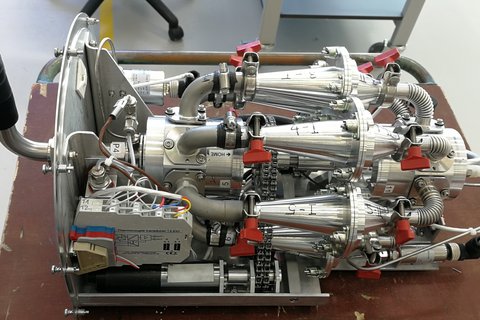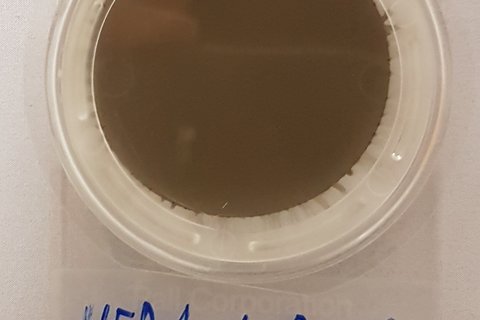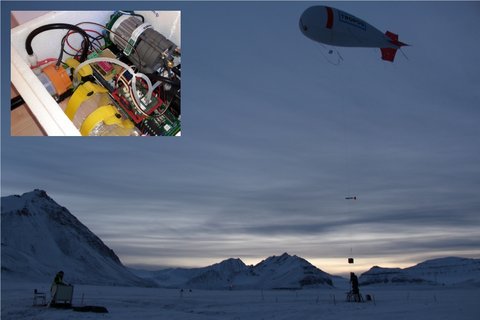Airborne aerosol particle filter samplers
Data concerning the physical and chemical properties of atmospheric ice nucleating particles (INPs) are scarce, especially at cloud level. Ground-based measurements of INPs alone are not sufficient for understanding their impacts on clouds, as they may not be representative for the conditions at cloud level. Hence, there is a strong need for sampling aerosol particle in general, and INPs in particular at higher altitudes (from boundary layer to lower stratosphere) and quantifying their properties. The airborne filter samplers used for this purpose have to fulfill challenging requirements like being light-weight, airtight, and approved for aviation.
HERA (High-volume flow aerosol particle filter sampler)
HERA was developed at TROPOS in close cooperation with enviscope GmbH as a novel particle collection system. With the aid of this system, particles in the size range up to approximately 7 microns are deposited on filters efficiently, with the cut-off depending on the upstream inlet. HERA consists of a sampling unit that allows switching between up to six different filters and a pump unit that can generate volume flows of up to 100 L/min. High volume flows are necessary to increase the probability of collecting particularly rare INPs. The deposited particles are analyzed in the laboratory with respect to their ice nucleation properties. In this way, both the atmospheric concentrations and the origin (e.g., biological or mineral) of the INPs can be determined. Additionally, there is the possibility to study chemical composition as well as morphology of the collected particles. HERA was successfully deployed in 2018 during PAMARCMiP on the Polar 5 aircraft of the Alfred Wegener Institute and in 2021 during CIRRUS-HL on HALO.
HALFBAC (High-volume and light-weight balloon-borne filter sampler)
HALFBAC was specially developed for the use on tethered balloons. The particularly low weight of approx. 4.5 kg allows simultaneous use of other instruments on the balloon, so that conclusions can be drawn about correlations between INP concentrations and other measured variables. The deployment of multiple HALFBACs in different near-ground layers promises insights into transport processes of INPs. HALFBAC was successfully deployed in 2021 at the Auwald crane in Leipzig and on the TROPOS tethered balloon BELUGA at the AWIPEV station in Ny Ålesund on Svalbard.



